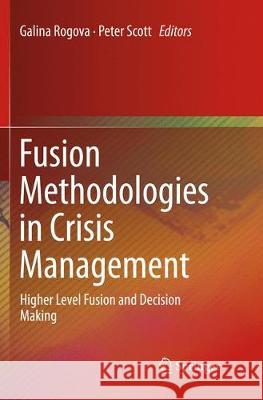Fusion Methodologies in Crisis Management: Higher Level Fusion and Decision Making » książka
topmenu
Fusion Methodologies in Crisis Management: Higher Level Fusion and Decision Making
ISBN-13: 9783319794082 / Angielski / Miękka / 2018 / 549 str.
Kategorie:
Kategorie BISAC:
Wydawca:
Springer
Język:
Angielski
ISBN-13:
9783319794082
Rok wydania:
2018
Wydanie:
Softcover Repri
Ilość stron:
549
Oprawa:
Miękka
Wolumenów:
01











